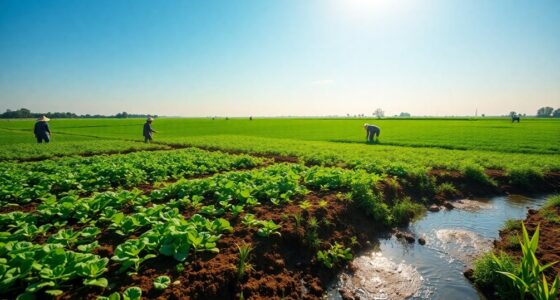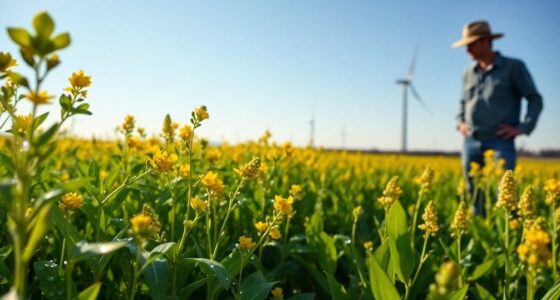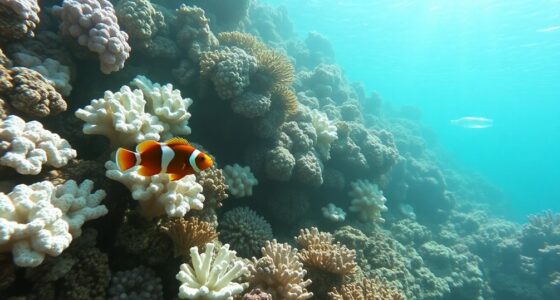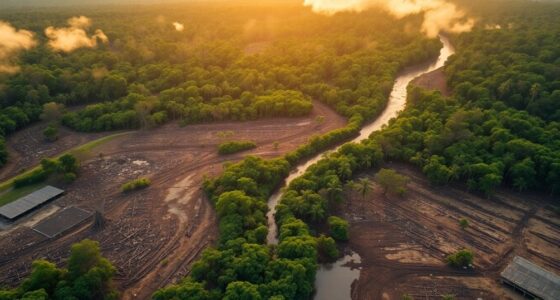Many of the world’s vital ecosystems are on the brink of collapse, threatened by human actions, climate shifts, and pollution. If these habitats disappear, the consequences will extend far beyond the loss of trees, reefs, or wetlands—they’ll affect global climate, water supplies, and countless species. Understanding what’s at stake and how we can help is crucial as these fragile places teeter on the edge of irreversible change.
The Critical States of Global Ecosystems
Many of the world’s ecosystems are now approaching critical thresholds, where their ability to support life begins to deteriorate rapidly. You might notice shrinking forests, declining fish populations, or the loss of vital wetlands. These signs indicate that ecosystems are crossing points of no return, leading to irreversible damage.
When ecosystems reach these tipping points, their natural functions falter—vegetation fails to regenerate, biodiversity drops sharply, and climate regulation weakens. The balance that once sustained diverse life forms becomes unstable.
As you observe these changes, remember that delay worsens the situation. The more ecosystems decline, the harder it becomes to restore them. Recognizing these critical states is essential to prevent further collapse and to mobilize urgent conservation efforts.
Early intervention can significantly improve the chances of restoring damaged ecosystems before they reach irreversible decline.
Major Threats Facing Natural Habitats
Human activities pose the most significant threats to natural habitats, driving rapid and often irreversible damage. Deforestation for agriculture, logging, and urban expansion destroys ecosystems and displaces countless species. Pollution from chemicals, plastics, and wastewater contaminates land and water, harming plants and animals alike. Track development is crucial for creating compelling narratives that can raise awareness and inspire action. Climate change, fueled by greenhouse gas emissions, alters temperature and rainfall patterns, leading to habitat loss and species extinction. Overfishing and hunting reduce wildlife populations, destabilizing entire ecosystems. Invasive species introduced by human travel or trade outcompete native organisms, disrupting ecological balance. These threats often overlap, intensifying their impact and leaving natural habitats vulnerable.
Addressing these issues requires urgent action to reduce human pressures and protect the delicate ecosystems that sustain life on Earth.
Success Stories in Conservation Efforts
Despite the numerous challenges facing endangered ecosystems, conservation efforts have achieved remarkable successes that demonstrate positive change is possible. You can look to places like the Yellowstone bison herd, where proactive management has helped stabilize populations and prevent extinction.
In Costa Rica, reforestation and protected areas have transformed degraded lands into thriving habitats for diverse species. The recovery of the California condor highlights effective captive breeding and release programs.
Community-led initiatives in Kenya have restored grasslands, supporting both wildlife and local livelihoods. These stories prove that targeted actions, collaboration, and persistent dedication can reverse damage and foster resilience.
Furthermore, incorporating diversification strategies into conservation funding and management can enhance resilience against environmental and financial risks, ensuring long-term sustainability of these vital efforts. Your involvement in supporting or replicating such efforts can make a real difference in preserving these vital ecosystems for future generations.
Innovative Technologies and Approaches
Innovative technologies are transforming conservation efforts by providing new tools to monitor, protect, and restore endangered ecosystems. Satellite imaging and drone technology enable you to track changes in land use, deforestation, and illegal activities in real time. Real-time monitoring allows for swift action and increased responsiveness in conservation initiatives. Artificial intelligence analyzes vast data sets to predict threats and identify vulnerable areas, allowing you to prioritize actions effectively. Sensor networks placed in ecosystems provide continuous data on temperature, humidity, and wildlife movement, giving you immediate insight into ecosystem health. Restoration techniques like bioengineering and genetic tools help you develop resilient plant and animal populations. These technologies empower you to act proactively, making conservation more precise, efficient, and scalable.
The Role of Local Communities and Indigenous Knowledge
Local communities and Indigenous peoples play a vital role in safeguarding endangered ecosystems because their traditional knowledge and daily practices are deeply connected to the land. Your understanding of local flora, fauna, and ecological cycles offers invaluable insights that scientific methods often overlook.
A multifunctional approach to land use, which incorporates traditional practices, can enhance conservation efforts and promote resilience within ecosystems. When you participate in ecosystem monitoring or restoration projects, your firsthand experience guides more tailored and effective interventions. Recognizing and respecting your knowledge encourages stronger stewardship and fosters community-led conservation efforts. Your involvement ensures that solutions are culturally appropriate and environmentally sustainable, strengthening the fight to save these fragile ecosystems.
Policy Changes and International Cooperation
Policy changes and international cooperation are vital for protecting endangered ecosystems, especially when local efforts alone can’t address the scale of environmental threats. You need strong policies that regulate activities like deforestation, pollution, and overfishing, ensuring sustainable practices are enforced globally.
International agreements, such as the Convention on Biological Diversity, create frameworks for countries to commit to protecting vulnerable habitats. Collaboration between nations helps share resources, expertise, and funding, making conservation efforts more effective.
You should advocate for policies that prioritize habitat preservation and climate action, recognizing that ecosystems cross borders and require coordinated responses. Without unified efforts, endangered ecosystems remain vulnerable to exploitation and neglect. Additionally, integrating automated insights can help monitor environmental changes in real time, enabling more responsive conservation strategies.
Your role is to support and push for policy reforms that foster global responsibility and collective action.
How Individuals Can Contribute to Preservation
Have you ever wondered how your daily choices can help protect endangered ecosystems? Small actions add up. You can reduce your carbon footprint by using public transport, biking, or walking instead of driving.
Choose sustainably sourced products and avoid single-use plastics that pollute habitats. Support conservation efforts by donating or volunteering with organizations focused on protecting vulnerable environments.
Educate yourself and others about the importance of preserving ecosystems and the threats they face. Make conscious decisions about energy use, such as switching to renewable sources or conserving electricity.
Be mindful of what you consume—favor local, organic foods that require less land and water. Understanding the role of maintenance and troubleshooting in preserving equipment used in conservation projects can help ensure their longevity and effectiveness. Every effort matters, and your commitment can inspire others to join the race to safeguard our planet’s most vulnerable ecosystems.
Conclusion
You have the power to make a difference. By staying informed, supporting conservation efforts, and making eco-friendly choices, you can help protect these vulnerable ecosystems. Every action counts, from reducing pollution to advocating for stronger policies. Together, we can slow the decline and give these critical habitats a fighting chance. Your commitment and awareness are key to ensuring a healthier, more sustainable future for our planet’s most endangered places.








